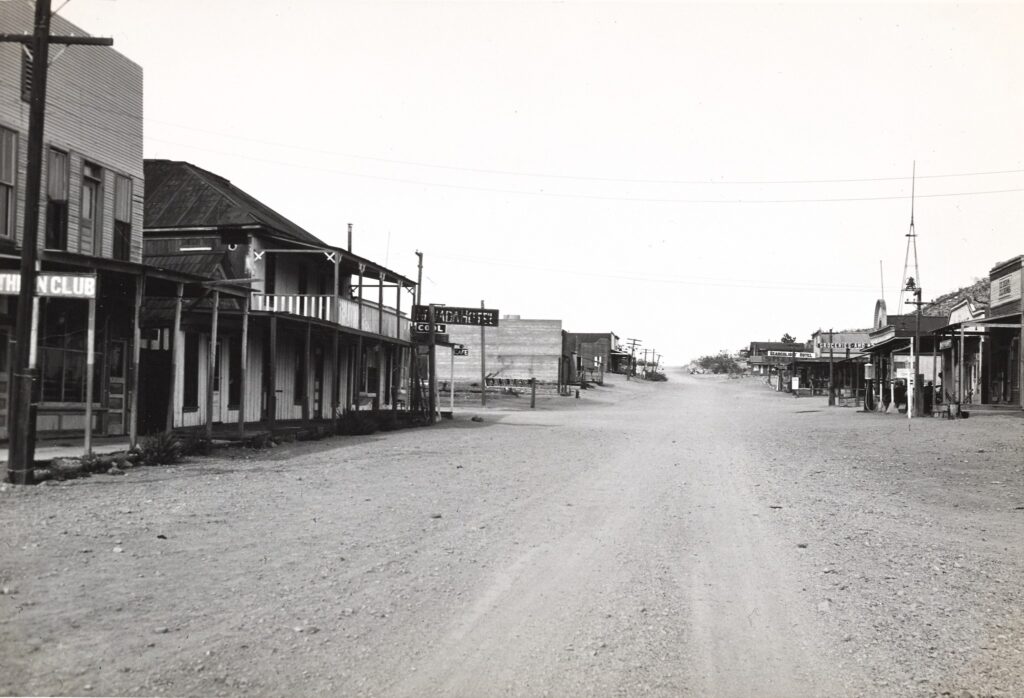
UNLV describes the history of Searchlight in the following;
“Gold ore was first discovered in Searchlight by Paiute Indians in 1870, 55 miles south of Las Vegas, but it was not until 1897, when G.F. Colton, a notable prospector, discovered a rich gold vein and word spread, that Searchlight boomed. The following year, the mining district was fully organized. The Quartette Mill opened in 1898 and soon became one of the city’s finest producers. In 1902 the first newspaper, Searchlight, began publishing, and the Duplex Mining Company constructed a twenty-stamp mill. In 1903 a miners’ strike brought the town’s production to a standstill until the mining companies brought in non-union miners to work the mines. The boom peaked during the spring of 1907 when the first train of the Barnwell & Searchlight Railroad arrived at Searchlight’s station to a warm greeting of a fifty-piece cowboy band. In 1907 Searchlight contained over forty-four working mines and a population of 5,000. However, Searchlight was hard hit by the financial panic of 1907.
The city recovered after a number of years and, by 1910, was noted for its fashionable and modern amenities and its commuter train. The community boasted a luxurious hotel, several saloons, a barbershop, a lumberyard, shops, cafes, union halls, boarding houses, schools, several stables, the newspaper, and its own hospital. The biggest mines were the Quartette, Cyrus Noble, Little Brown Jug, Old Bottle, and Duplex, whose gold production totaled $7 million. In 1934 a flotation mill was built, and a 30-ton custom mill ran briefly in 1935. However, by the late 1940s, little was left of the once modern boomtown of Searchlight.”
Image courtesy of the Franklin M. Murphy Photograph Collection, approximately 1929-1933. PH-00232. Special Collections and Archives, University Libraries, University of Nevada, Las Vegas. Las Vegas, Nevada.